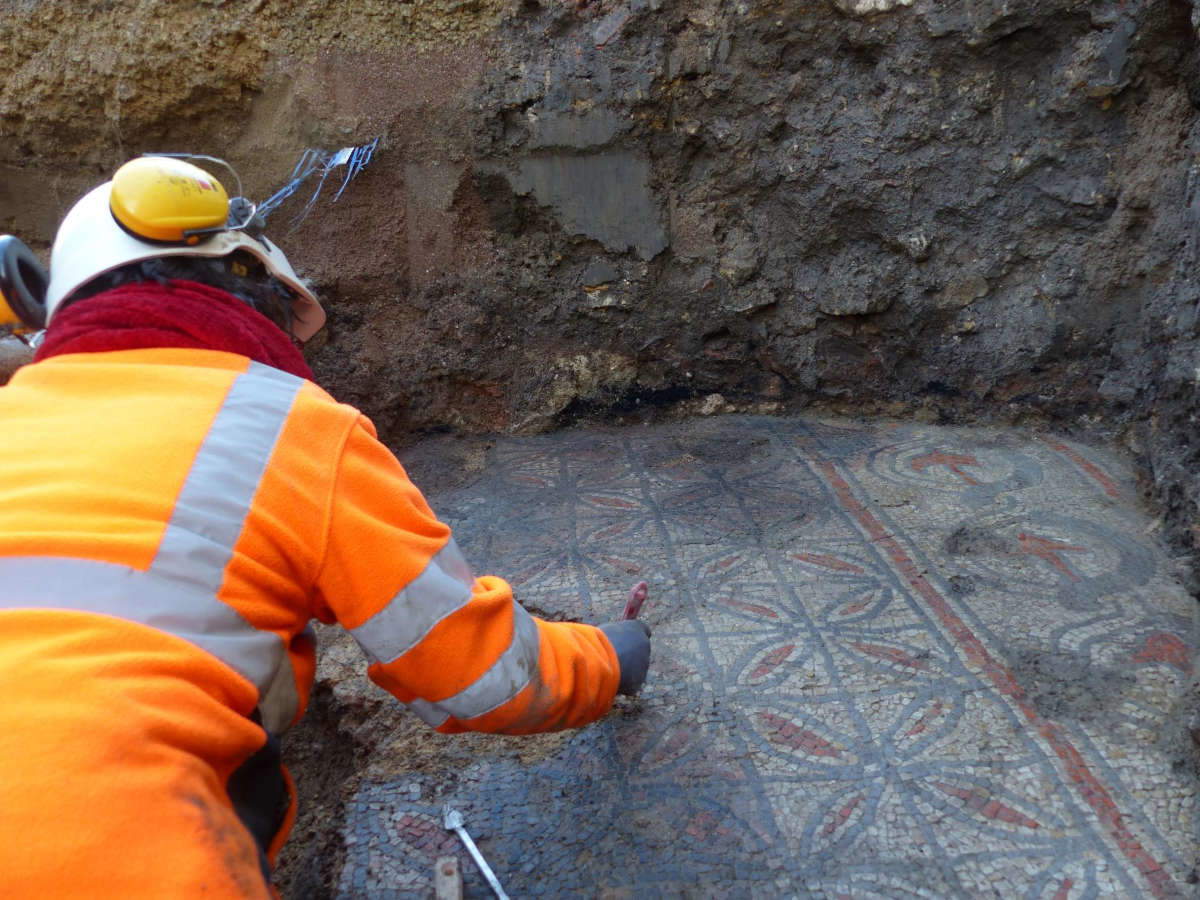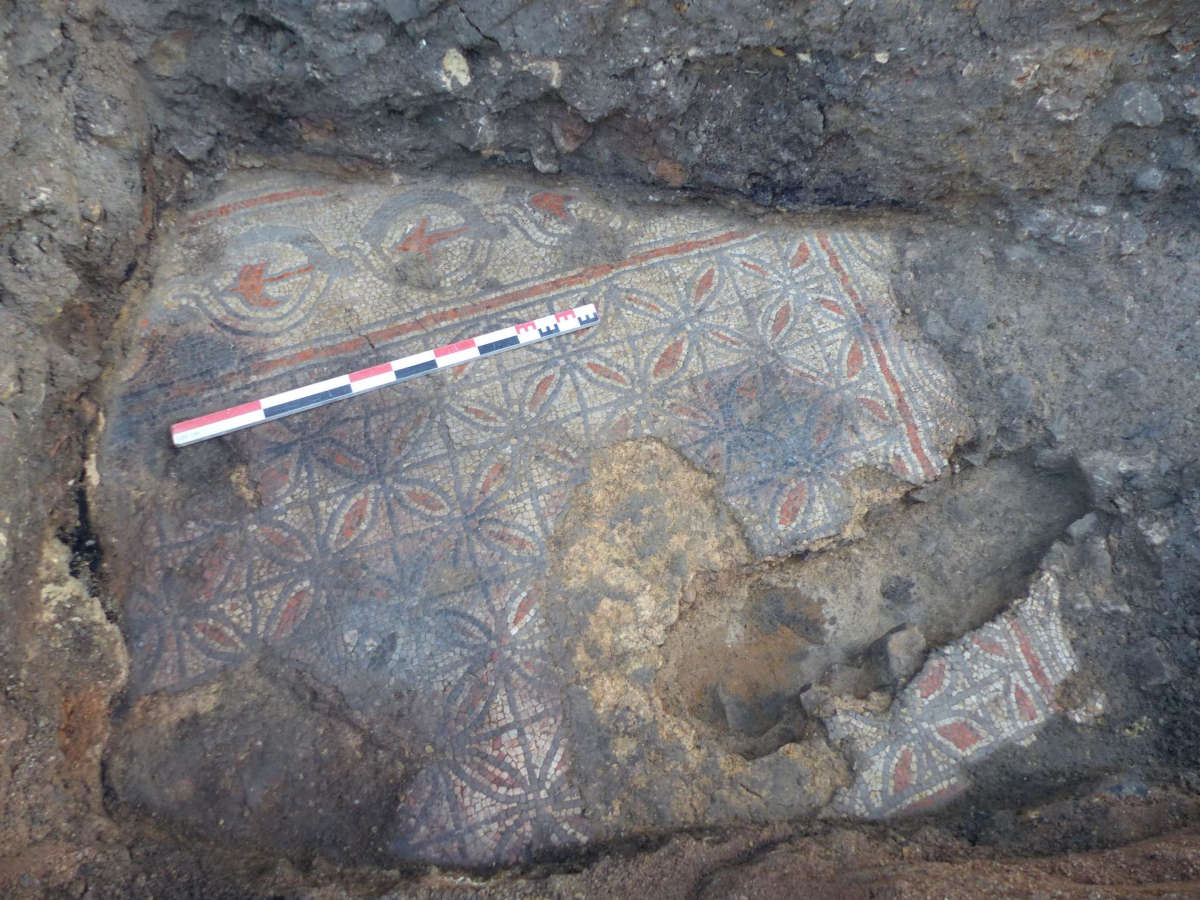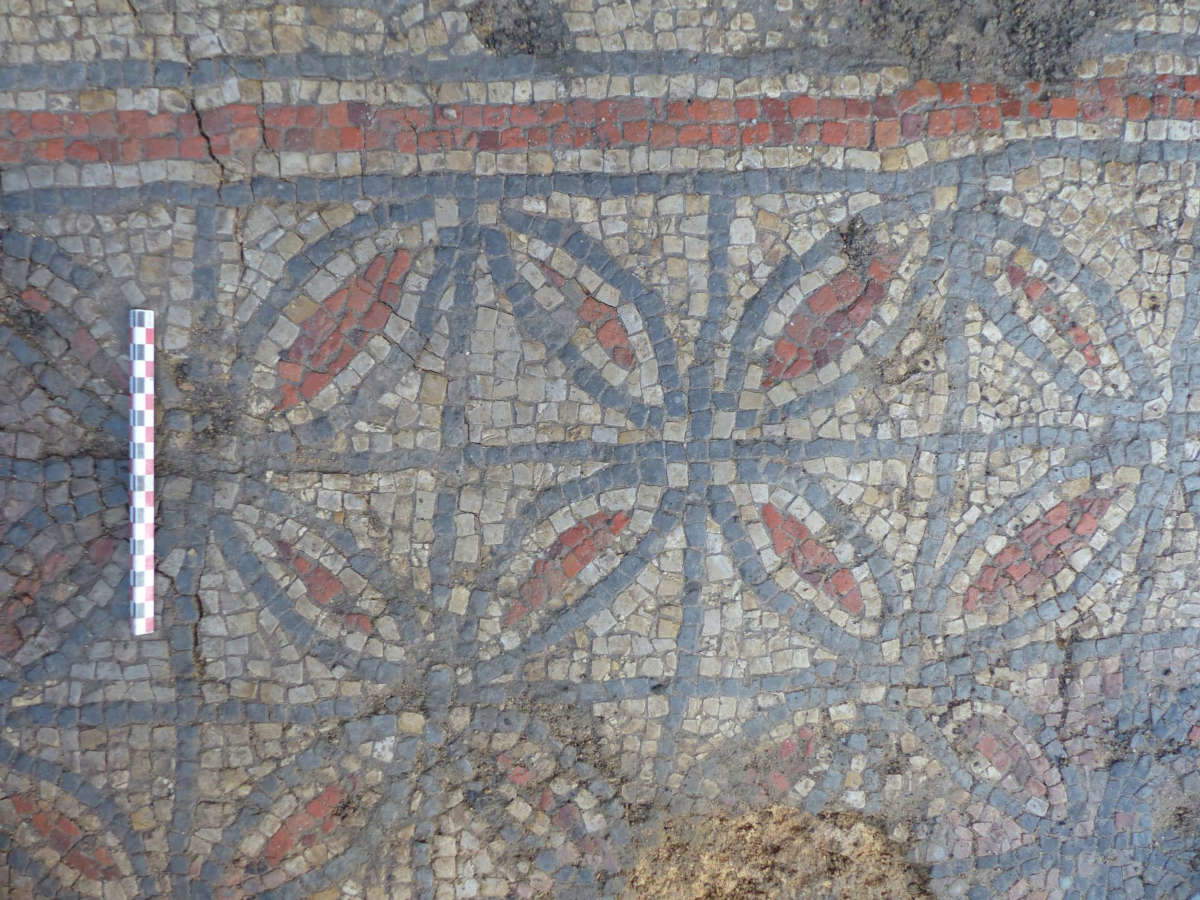During a preventive excavation prescribed by the Burgundy-Franche-Comté regional archaeological service in preparation for the installation of a district heating network by the Dalkia group, an interesting early Christian mosaic was discovered in the historic center of the city of Nevers near the remains of the ancient baptistery, specifically 2.50 meters southwest of the structure, in a bend of the moat excavated for the installation of the network.
The excavation, which provided new information on the urban topography of Nevers from late antiquity or the late Middle Ages to the present day, runs along the north side of the cathedral. The cathedral of Nevers has the peculiarity of having two opposing apses, one on the east side from the Gothic period, the other on the west side from the Romanesque period. The presence of the Gothic choir is due to the reconstruction, starting in the 13th century, of the eastern part of the previously collapsed Romanesque cathedral at the level of the portal, baptistery, and a small adjoining church. Several phases of reconstruction followed until the 16th century. It was only thanks to postwar archaeological excavations (the cathedral suffered bombing in 1944 and was in need of restoration) that the layout of the Western Romanesque choir (facing west) could be explained, with the discovery to the east of the baptistery and the 11th-century portal. Several excavation campaigns carried out between 1947 and 1962, then more recently between 1989 and 1991, have thus renewed knowledge about the history and evolution of the cathedral and the bishopric complex more generally. Currently accessible to visitors are the remains of the baptistery and the Romanesque portal of the cathedral, preserved under the present floor of the church.
The mosaic discovered by French archaeologists is located at a depth of 1.40 m and consists of a central panel formed by rosettes in blue and red tiles on a white background. To the south the band bordering the central panel is preserved in its width. It shows a two-strand braid motif associated with a symbol (perhaps an axe). Beyond the band on the south side, the mosaic gives way to a pink floor. On the west side, a few stones held together by mortar are the rare evidence of the wall that bordered the mosaic. This wall is level a few centimeters above the elevation of the ground tiles.
Although an ancient dating of the mosaic is possible, its contemporaneity with the baptistery built in the fifth or early sixth century is also possible. According to French archaeologists however, a more recent date, up to the middle middle ages, cannot be ruled out when considering the coeval mosaic from one of the most recent phases of restoration of the baptistery.
 The mosaic
The mosaic The mosaic discovered in
The mosaic discovered in The mosaic
The mosaic
 |
| France, they dig to install a heating network and find an ancient mosaic |
Warning: the translation into English of the original Italian article was created using automatic tools. We undertake to review all articles, but we do not guarantee the total absence of inaccuracies in the translation due to the program. You can find the original by clicking on the ITA button. If you find any mistake,please contact us.